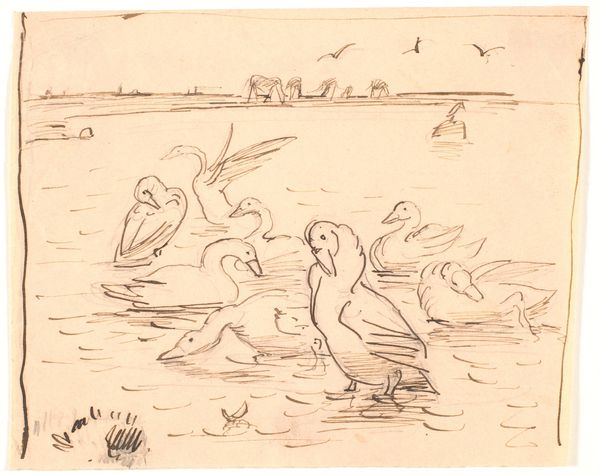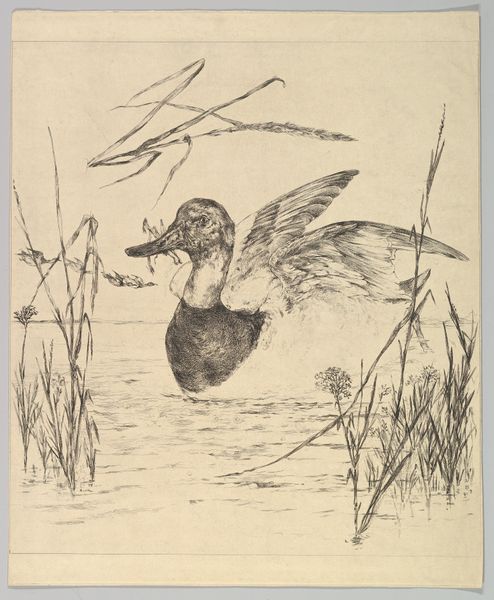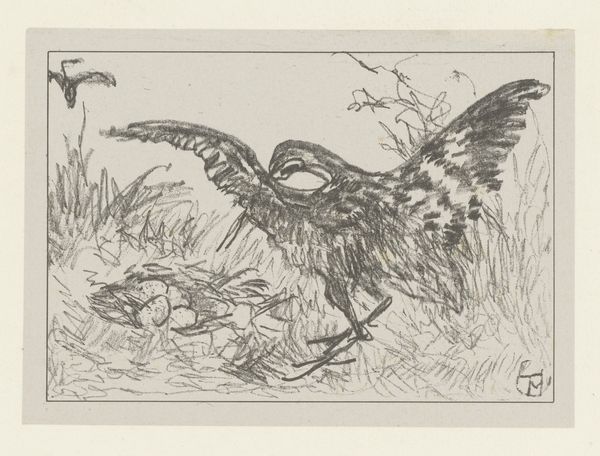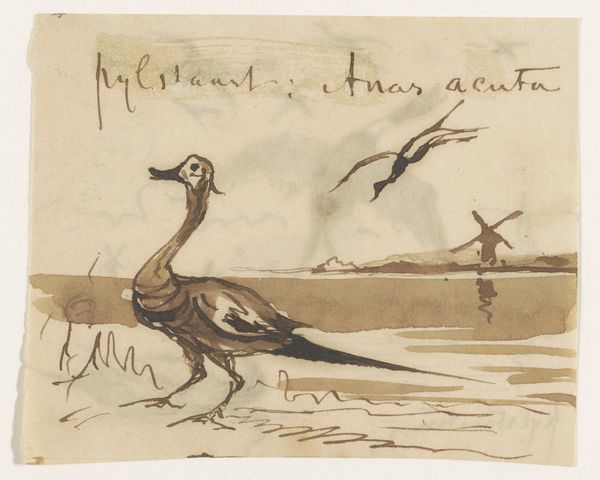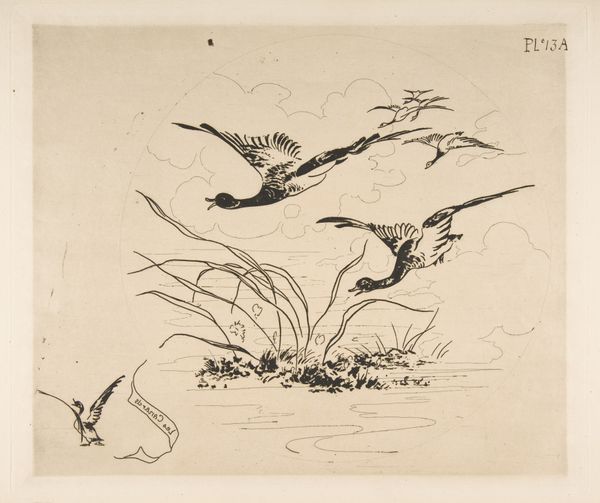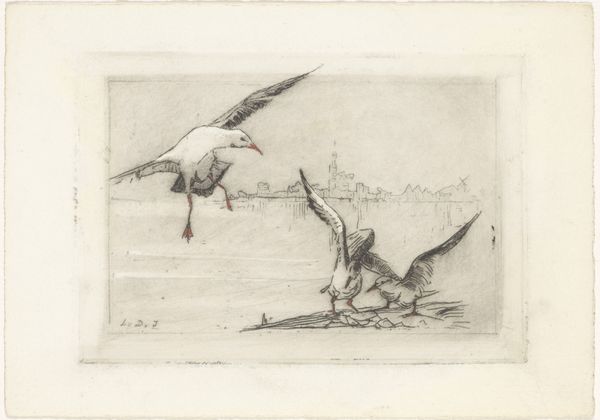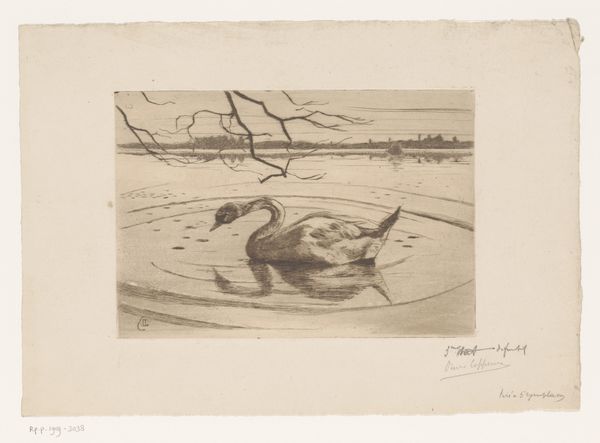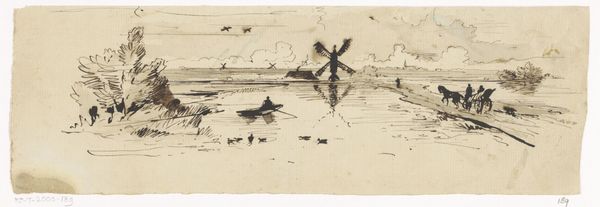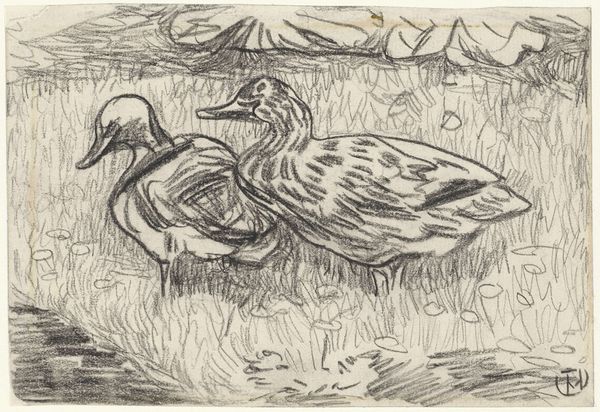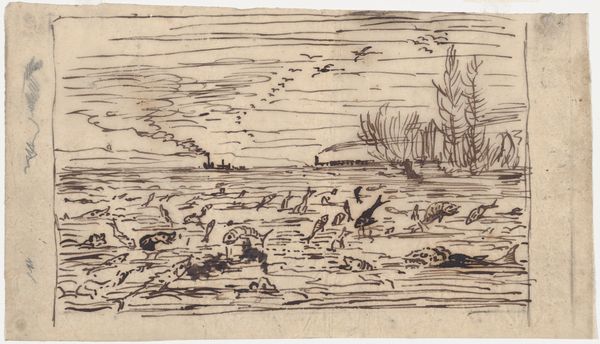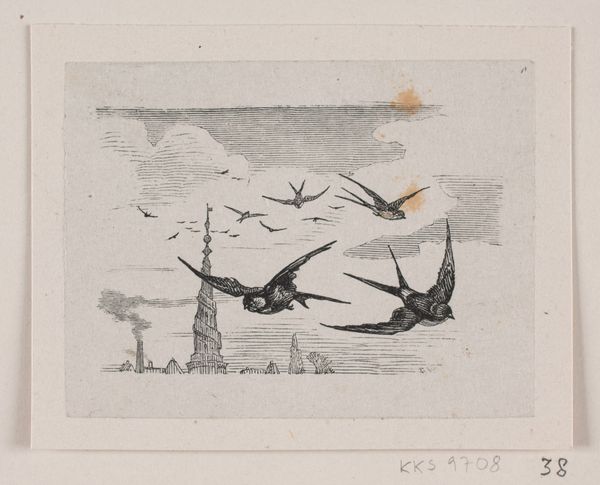
Dimensions: height 67 mm, width 82 mm
Copyright: Rijks Museum: Open Domain
Curator: Before us is "Pijlstaarteenden," a watercolor drawing by Johannes Tavenraat, likely created between 1840 and 1880. What are your first impressions? Editor: Well, it’s strikingly dynamic. The composition feels restless, almost urgent. The birds are captured mid-flight, mid-squawk. There’s a sense of barely controlled energy here. Curator: That energy speaks to its place within the Romantic movement, wouldn't you agree? We see that heightened emotion, that celebration of the natural world but with an awareness of its inherent power. This work also fits into a broader historical context; consider the rising interest in ornithology and natural sciences at this time, with its burgeoning cultural and social capital. Editor: Absolutely, but I’m also thinking about what it represents beyond pure ornithological study. The waterfowl take center stage, right? But beyond their elegant depictions in various movements and poses, what are the sociopolitical ramifications, or historical roots of understanding how Tavenraat portrays them in the 19th century Netherlands? Curator: That is interesting to consider. These weren't just observations of wildlife, but also reflections of the social landscape. Bird imagery throughout art history has long served as metaphors for freedom, migration, but also privilege, depending on who is doing the hunting or owning the land. In 19th century Netherlands, where do waterfowl fit in to class structures? How would ordinary folks be allowed to interact with these same wild spaces or fowl? Editor: Exactly! How does access influence his rendering, or change our reading of them as symbols of the elite versus an idealized “natural” space? I’m wondering too, is the rapid, almost frantic application of watercolor intentional in communicating that struggle for space? The birds seem crammed into a limited arena. Curator: A fascinating interpretation! I lean towards seeing that sketch-like quality as reflecting a romantic ideal, emphasizing raw, unfiltered observation. It's the artist capturing a fleeting moment. Editor: Perhaps we’re both seeing elements of truth there, which makes the artwork enduring and powerful! Curator: Indeed. There are often competing cultural narratives operating simultaneously within a single artwork.
Comments
No comments
Be the first to comment and join the conversation on the ultimate creative platform.
